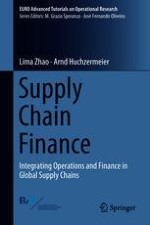This textbook presents a coherent and robust structure for integrated risk management in the context of operations and finance. It explains how the operations-finance interface jointly optimizes material and financial flows under intricate risk exposures. The book covers financial flexibility, operational hedging, enterprise risk management (ERM), supply chain risk management (SCRM), integrated risk management (IRM), supply chain finance (SCF), and financial management of supply chain strategies. Both qualitative and quantitative approaches – including conceptualization, theory building, analytical modeling, and empirical research – are used to assess the value creation by integrating operations and finance.
“This book provides a comprehensive description of the interactions between finance and operations and of how managers can best make decisions in recognition of these effects.” John R. Birge, University of Chicago“Supply chain finance is an emerging area where innovations can unlock great values to complement the advances in information and physical flows of supply chain.” Hau L. Lee, Stanford University“This book provides an excellent overview of supply chain finance and its most recent advances.” Jan A. Van Mieghem, Northwestern University“This book is indispensable for advanced students as well as practitioners when looking for a pedagogical sound and scientific rigorous approach to Supply Chain Finance.” Ralf W. Seifert, IMD/EPFL“The book advances our knowledge on the interface between operations and finance and provides managerial guidelines for effective risk management in the supply chain.” Xiande Zhao, CEIBS
